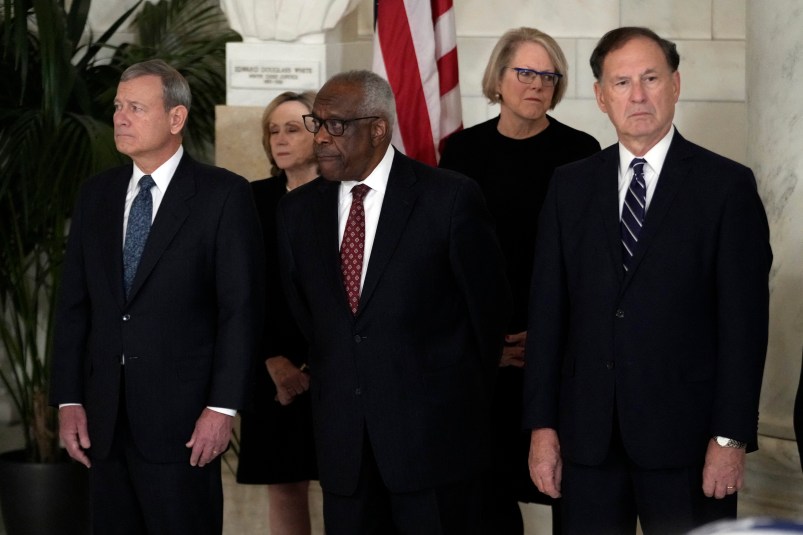We’re trying to make sense of what we think of Tim Geithner’s latest go at resolving the toxic assets issue. As we’ve discussed in various places going back months now, it seems like another twist on the basic concept of getting taxpayers to pay or underwrite purchasing these bad debts from the banks at inflated, perhaps wildly inflated, prices. Here’s a roundup of harsh critiques of the plan.
But I’d like to take a moment to pursue another point Thoma made a few days ago which, though specifically applied to AIG, applies to the large bank bailout issue as well.
Thoma was reviewing Lucian Bebchuk’s argument that AIG is not to big to fail and that rather than continue to pump taxpayer dollars into that black hole we should usher the company through some process of managed bankruptcy/restructuring. Thoma seems to broadly agree that this is the best approach but points to the unlikely but not impossible catastrophic outcome.
Think of it like this — both to understand the best way forward and as a way to understand the possible thinking of people at Treasury.
For the sake of discussion let’s assume that ‘biting the bullet’ with AIG or the banks (broadly speaking putting them through some form of managed restructuring as opposed to keeping them on life support) has a 5/6 chance of a good outcome, much better and much cheaper for the taxpayer than the current situation. But there’s a 1/6 chance of a catastrophic outcome. Are those good odds?
Now, let’s think about it from Geithner’s point of view. You have a 1/6 chance of literally destroying the economy, with all the real and reputational consequences of that fact. And what are the upsides of the 5/6 chance? Here’s where the gaming out gets interesting, for lack of a better word. It’s not as though if you try the Swedish model, or some spin on it that everything gets great all of a sudden and people get their 401k money back and everyone who got laid off gets their jobs back.
You’d probably get a good nod in the history books. And you’d likely have saved the taxpayers a ton of money in the longterm and you’d avoid going down in history as the standout driver of moral hazard of all times. But a lot of these benefits and the perception of the benefits would accrue over months and years, even decades.
Now, you might say, tough luck. This is what real leadership should look like — you take stock of the situation and do what’s right, even if the political upside isn’t that great. And I haven’t taken into account here that the ‘safe’ approach may not work at all. And if it doesn’t then the Stimulus will be stillborn and so forth and we’ll remain in a terrible spot. But I do think risk aversion in the sense I’ve described helps illuminate why we seem to be in the paralyzed position that many of us (I think rightly) decry.






